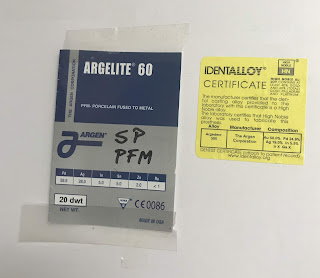So many choices for crown preparation designs?
When a dentist restores a tooth with a crown they have to make some decisions. Should I employ a chamfer, shoulder, shoulder bevel, 45 degree chamfer, or a feather edge. How much occlusal reduction is needed....1mm, 1.5mm, 2mm ?, How about buccal reduction : .5mm, .75 mm, 1mm 1,25 mm so many choices so many different opinions. The basis for their decisions may depend on a number of factors including the materials chosen and the tooth's position in the arch.
Some dentists employ one basic preparation and use it in most situations and that seems to work for them. I am not one of them. I like to analyze each tooth and employ a type of preparation that I feel is best for its long term preservation. At the end of the day, I believe a dentists primary mission is to help preserve our patients teeth and usually a one size fits all approach to tooth preparation is not the best approach. The amount of tooth reduction and type of finish line should be dependent on a number of factors including the tooth involved, the esthetic needs of the patient and the materials I select for the restoration.
Many teeth that I end up crowning are not in the best of shape since they have cracks, extensive decay and may have had multiple prior restorations. The restoration of these types of teeth often turns out better when the remaining tooth structure is not over prepped, especially at the finish lines which tend to be placed at neck of the tooth, near to the pulp and subgingival (usually not the fattest part of the tooth). If a one mm shoulder or chamfer is placed on the root, it may result in too much tooth reduction in the other parts of the preparation since crown preparations need to be tapering from the chamfer to the occlusal surface. Although many dentists prefer chamfer finish lines, sometimes bevels or feather edge finish lines can help preserve the remaining tooth structure of badly broken down teeth, while making a one mm+ chamfer or shoulder finish line can weaken what is left of the remaining tooth structure.
By exercising good clinical judgment, most teeth can be successfully prepared and restored with a crown. Unfortunately "digital dentistry" doesn't seem to do offer a solution for restoring feather edge preparations or even shoulder bevel preparations, so for the moment these preparations are best captured using elastomeric impressions and restoring with restorations that are ceramo metal or entirely metal.
If digital dentistry is to be employed for teeth with preparations on the root and /or subgingival ,then I prefer some sort of Zirconium restoration since it can be employed using a 45 degree chamfer finish line with minimal chamfer width (as little as .5 mm if desired).
from Ask Dr. Spindel - http://lspindelnycdds.blogspot.com/2019/08/so-many-choices-for-crown-preparation.html - http://lspindelnycdds.blogspot.com/


Comments
Post a Comment